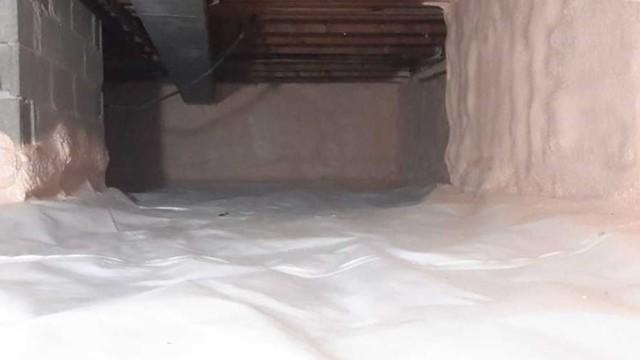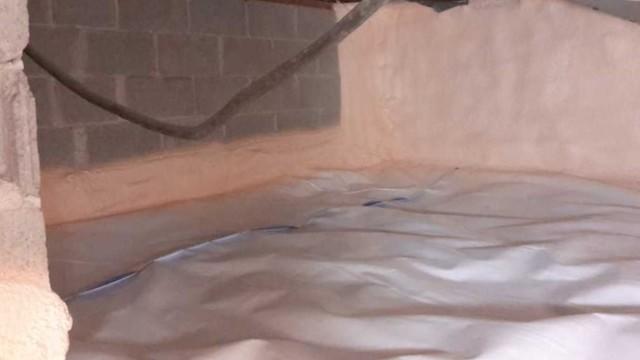Fibreglass Insulation in a Crawl Space
Challenge
It’s quite common to see fibreglass insulation used in crawl spaces across all of southwestern Ontario. Whether the insulation was installed by the builder or by the home-owner looking to improve the home’s comfort as well as heating and cooling costs, if the crawl space is unsealed, the fibreglass insulation is essentially useless.
Problems with fibreglass insulation in an unsealed crawl space:
It is only effective within an enclosed space – Fibreglass insulation is loose and allows for the passage of air, therefore, if there are open or unsealed vents, an exposed dirt or concrete floor, or unsealed sill plates and rim joists; the outside air is entering the crawl space and passing right through the insulation and making its way into the home.
Fibreglass insulation absorbs moisture – When it becomes even a little damp, it loses all of its insulating capabilities. When fibreglass insulation becomes saturated, or when it falls to the floor below, it completely exposes the underside of the home to the outside elements.
Foil-faced or paper faced fibreglass insulation is often improperly installed – Air space between the foil and floor above is necessary to create the radiant barrier, but most often, the insulation is just jammed up against the wood. Regardless if there is the proper airspace, if the crawl space is unsealed, the insulation is ineffective as described in the two points above.
Solution
Simply stated, for fibreglass insulation to be effective, the crawl space must be completely sealed. We call this process “crawl space encapsulation”.
Along with an encapsulated space, there is a better option for insulating a crawl space: spray foam insulation.
Our closed-cell spray foam insulation:
- Is an all-in-one system that seals air leaks, prevents moisture penetration, and provides a high insulation value
- Adheres firmly and permanently to any material it contacts
- Is waterproof
- Won’t degrade, compress or lose R-value like fibreglass insulation can
- Has a high insulation value: at least R-6 per inch of thickness
- Is made using recycled plastics and vegetable oil
In most cases, (of course, some exceptions do apply) it’s recommended that the moisture and mould-resistant spray foam be applied on the exterior walls of an encapsulated crawl space.
Why?
Most homes with crawl spaces have heating and cooling air ducts, electrical components and plumbing lines, which can easily be accessed for maintenance or repair when the spray foam insulation is on the outside walls.
If you have questions about your crawl space, we’d be pleased to offer you a complimentary inspection and estimate. Please call 1-866-277-1277 or click here to submit your information online.
Project Summary
Inspector: Bryan
Project Foreman: Tim









